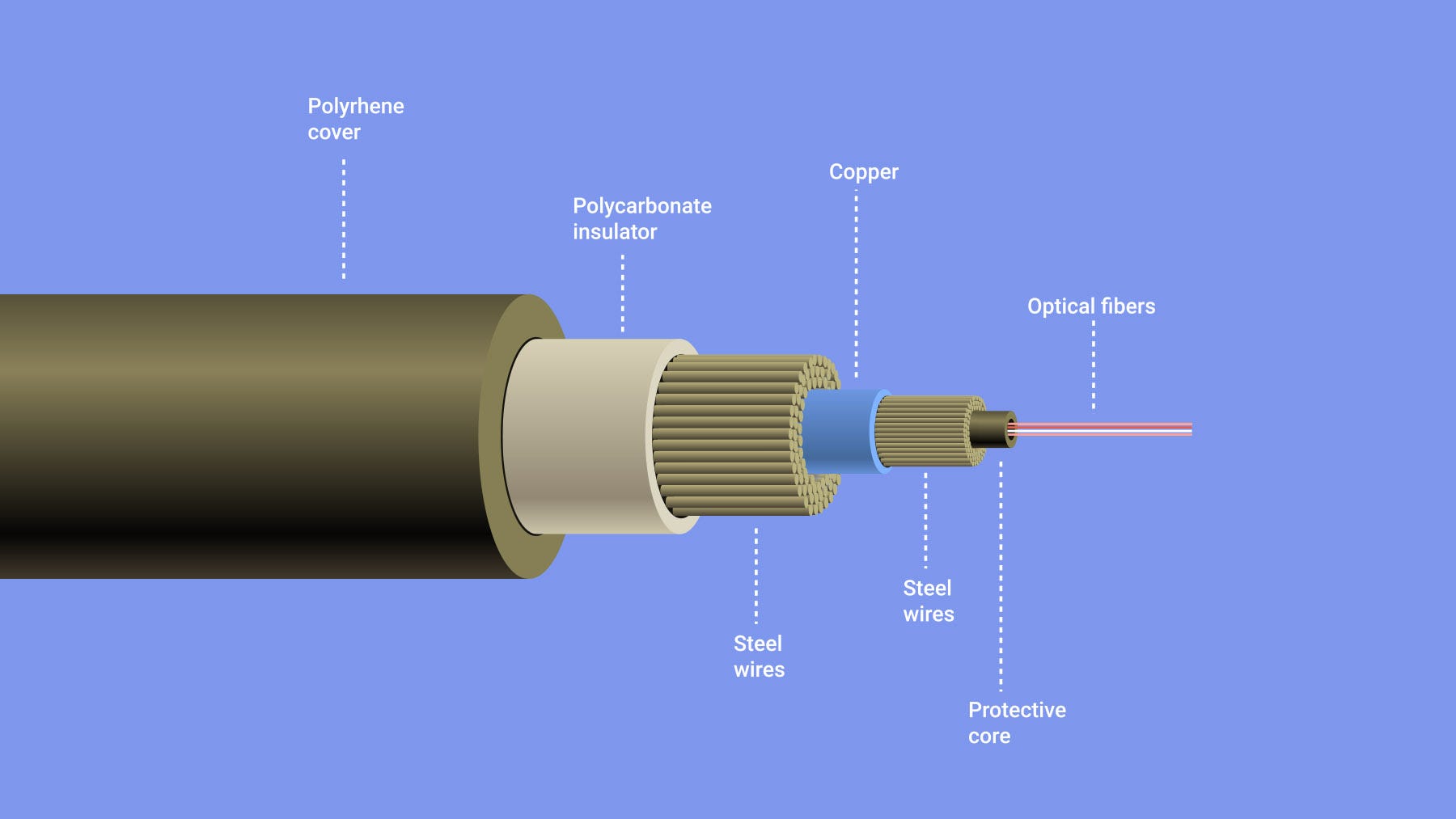Fragile Connections: Why Subsea Cables are the Weak Link in Global InfrastructureFragile Connections: Why Subsea Cables are the Weak Link in Global Infrastructure
Concern is rising over global risks to submarine communications cables. How justified are those fears?

Subsea cables are the lifeblood of digital infrastructure, forming the unseen backbone that enables data centers to provide seamless connectivity across continents. Any disruption – whether from geopolitical conflict, accidents, or natural disasters – can send ripples through the data center ecosystem, affecting uptime, service delivery, and ultimately, the stability of global digital communications.
In February 2024, the disruption of three submarine communications cables in the Red Sea highlighted the ongoing concerns over the vulnerability of the world’s fragile data networking connections.
The anchor of a cargo ship that was attacked by Houthi militants was deemed to be the most likely cause of damage to the Seacom, TGN, AAE-1, and EIG cables, which play a vital role in connecting Europe and Asia’s infrastructure.
Once cut, a submarine cable can take months to repair. If widespread sabotage were to occur, disruptions could span months, underlining subsea cables as a persistent weak link in the integrity of global digital infrastructure, according to experts.
“Subsea cable breaks are uncommon, but when they do happen repair times can be lengthy. It can take anywhere from six weeks to six months to get permits and a repair ship in place and start the fix,” Andy Castle, vice president of digital interconnection operations and engineering at Equinix, told Data Center Knowledge.
As these vulnerabilities come to light, the need for a robust framework to secure subsea cable infrastructure has never been more critical. With a limited number of vessels tasked with the maintenance and protection of these essential communications links, the challenges of safeguarding such a vast digital landscape are becoming increasingly apparent.
The Gathering Storm: Protecting the Global Web of Subsea Cables
Subsea cable maintenance is covered by non-profit cooperative agreements and organized via global zones. Europe is covered by the Atlantic Cable Maintenance & Repair Agreement (ACMA), and the Mediterranean Cable Maintenance Agreement (MECMA), which covers the Mediterranean Sea, the Black Sea, and the Red Sea.
Despite the vast geographic area they cover, a report (PDF) compiled for the European Parliament in 2022 indicates that just four ships are responsible for maintaining cables from the Atlantic to the Red Sea – three based in the European Union and one based in the UK. Globally, there are just 22 vessels equipped with the necessary specialist equipment.

Just four boats maintain subsea cables across the Atlantic and the Red Sea (Image: Alamy)
The European Union report was published in June 2022, just three months before the destruction of the Nord Stream gas pipeline, which piped natural gas from Russia to Germany.
A year later, following news of the German police investigation, former Russian president Dmitry Medvedev, currently deputy chairman of the Security Council of the Russian Federation, used his Telegram channel to issue an explicit threat to submarine communications cables, claiming that Russia had a “right” to attack them in retaliation.
Indications of state-sponsored interest in global submarine communication cables are nothing new. The EU security report was commissioned following years of increasingly suspicious nation-state activity around submarine communications cables – especially by vessels officially or unofficially linked with the states of Russia and China.
“We are now seeing Russian underwater activity in the vicinity of undersea cables that I don’t believe we have ever seen [before],” US Navy Rear Admiral Andrew Lennon, commander of NATO’s submarine forces, told The Washington Post in 2017. “Russia is clearly taking an interest in… NATO nations’ undersea infrastructure,” he added.
Five years later, Royal Navy admiral Sir Tony Radakin, head of the UK’s armed forces, noted a “phenomenal increase in Russian submarine and underwater activity” since the turn of the century, culminating in live-fire exercises off the coast of Ireland in January 2022 by the Russian Navy. Their chosen location was in the vicinity of several submarine communications cables linking the UK, France, and the US.
China’s role in the global subsea cable market is more complex. HMN Technologies is one of the biggest global players in the submarine cable laying and repair market. Moreover, investment in cable infrastructure is also a key component of the Chinese government’s Digital Silk Road project.

A simplified cross-section of a subsea fiber optic cable (Image: Alamy)
At the same time, however, China’s assertive foreign policy has seen it involved in incursions into land, waters, and airspace belonging to Taiwan, Japan, the Philippines, Malaysia, Vietnam, India, and Bhutan in recent years.
Moreover, China claims the whole of the South China Sea as its own. This has a unique set of implications for submarine communication cables traversing the region, as well as cables connecting to Taiwan.
Read more of the latest data center networking news
Around Africa, meanwhile, the picture is somewhat blurred. Denys Reva, a researcher for the Institute for Security Studies in Pretoria, South Africa, told Data Center Knowledge: “Europe has a very well-developed maritime domain awareness system, where they’re cognizant of which ships are moving and where they’re moving, but this is much less well-developed in Africa, although it does vary from country to country,”
As a result, potentially nefarious subsea cable activity is not monitored nearly as closely around Africa as it is in European waters.
The potential threat is compounded by relatively poor land-based connections between nations in Africa, added Reva. On the upside, Cape Town provides a base for one of the world’s handful of submarine cable repair ships.
Wear, Tear, and Natural Disasters
While attacks from nation-states loom large, the majority of submarine cable damage occurs by accident – from careless dredgers to natural disasters.
Indeed, the biggest danger comes from earthquakes, tsunamis, and powerful underwater currents. The undercurrents off the coast of Africa by the estuary of the Congo River are particularly challenging for subsea cable infrastructure, says Reva.
Earthquakes, meanwhile, can be just as destructive as sunken ships. When the Tōhoku seaquake occurred in 2011 it caused the rupture of four of the 20 submarine cables connecting Japan.
However, there’s no denying that nefarious risks are increasing.
NATO has responded by re-establishing Cold War-era maritime capabilities, including the procurement of maritime patrol aircraft and ships, and a new North Atlantic Command to coordinate NATO activity to combat the threat.
The digital infrastructure industry, too, has responded with embedded SMART – science monitoring and reliable telecommunications – cable technology capable of capturing real-time environmental information.

SMART cables add sensor components to commercial subsea fiber optic cables that collect seismic and oceanographic data (Image: Sub Sea Data Systems)
According to Castle: “These sensors are used to capture real-time monitoring of water temperature, water pressure, and study movement of tectonic plates. This can provide critical warnings to population centers when they detect tsunamis & earthquakes, helping with alert systems and emergency preparedness.”
SMART cable deployments have gained momentum in recent years, despite high costs.
Castle at Equinix said there is a growing selection of potential technical solutions to help protect underwater network cables. “There are several proactive measures that can be taken to protect subsea cables and terrestrial fiber infrastructure,” he said. “Designing and deploying networks from the beginning to handle resiliency, redundancy, and reach is a huge start.
“Things like increased active sensor monitoring, adding more receiving stations for Alarm Identification Systems (AIS), and active fiber monitoring to sectionalize faults up to 200km. But also promoting education and cable awareness and security programs to maritime communities, fishermen, and ports in areas around the world with subsea cable infrastructure.”
These will all help, of course, but it remains to be seen how much they will help in the face of determined, coordinated, and well-resourced attackers.
About the Author
You May Also Like









